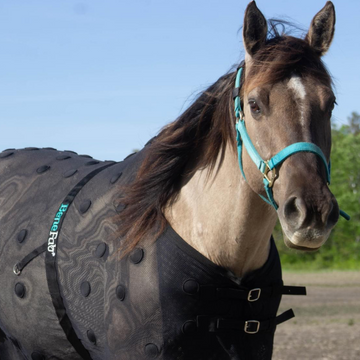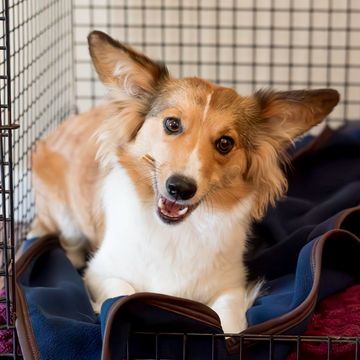 There is no shortage of rain this year! In fact, some areas are severely flooded. This is generally known to be a problem in the springtime but because of the summer rainfall, mud has become a common occurrence in horse pastures all over the country. We will discuss a couple of ways to help in reducing mud around your farm and avoid losing precious pasture.
Have a designated paddock. If you have lush pastures for your horses to graze on, do not turn them out on it when it is wet. Horses on wet pastures create mud, compact the soil, overgraze and trample the grass. This results in less vegetation and nutrients. Rather than keeping horses in the barn all day, create a designed paddock area. A paddock can be small and does not need to have grass. This is your “go-to” pasture for rainy or muddy days. Be sure to provide your horse with hay in the paddock to keep from causing boredom. Boredom leads to bad habits.
Renovated heavily compacted areas. The goal is to have a safe, well-drained surface for horses. High traffic areas in pastures (near gates, water troughs, etc.) are hard to keep. Many of these areas become muddy or compacted and will no longer grow grass. For these areas, you might consider using a different type of footing.
There is no shortage of rain this year! In fact, some areas are severely flooded. This is generally known to be a problem in the springtime but because of the summer rainfall, mud has become a common occurrence in horse pastures all over the country. We will discuss a couple of ways to help in reducing mud around your farm and avoid losing precious pasture.
Have a designated paddock. If you have lush pastures for your horses to graze on, do not turn them out on it when it is wet. Horses on wet pastures create mud, compact the soil, overgraze and trample the grass. This results in less vegetation and nutrients. Rather than keeping horses in the barn all day, create a designed paddock area. A paddock can be small and does not need to have grass. This is your “go-to” pasture for rainy or muddy days. Be sure to provide your horse with hay in the paddock to keep from causing boredom. Boredom leads to bad habits.
Renovated heavily compacted areas. The goal is to have a safe, well-drained surface for horses. High traffic areas in pastures (near gates, water troughs, etc.) are hard to keep. Many of these areas become muddy or compacted and will no longer grow grass. For these areas, you might consider using a different type of footing.
Blog
Horse Farm Management: Reducing Mud
 There is no shortage of rain this year! In fact, some areas are severely flooded. This is generally known to be a problem in the springtime but because of the summer rainfall, mud has become a common occurrence in horse pastures all over the country. We will discuss a couple of ways to help in reducing mud around your farm and avoid losing precious pasture.
Have a designated paddock. If you have lush pastures for your horses to graze on, do not turn them out on it when it is wet. Horses on wet pastures create mud, compact the soil, overgraze and trample the grass. This results in less vegetation and nutrients. Rather than keeping horses in the barn all day, create a designed paddock area. A paddock can be small and does not need to have grass. This is your “go-to” pasture for rainy or muddy days. Be sure to provide your horse with hay in the paddock to keep from causing boredom. Boredom leads to bad habits.
Renovated heavily compacted areas. The goal is to have a safe, well-drained surface for horses. High traffic areas in pastures (near gates, water troughs, etc.) are hard to keep. Many of these areas become muddy or compacted and will no longer grow grass. For these areas, you might consider using a different type of footing.
There is no shortage of rain this year! In fact, some areas are severely flooded. This is generally known to be a problem in the springtime but because of the summer rainfall, mud has become a common occurrence in horse pastures all over the country. We will discuss a couple of ways to help in reducing mud around your farm and avoid losing precious pasture.
Have a designated paddock. If you have lush pastures for your horses to graze on, do not turn them out on it when it is wet. Horses on wet pastures create mud, compact the soil, overgraze and trample the grass. This results in less vegetation and nutrients. Rather than keeping horses in the barn all day, create a designed paddock area. A paddock can be small and does not need to have grass. This is your “go-to” pasture for rainy or muddy days. Be sure to provide your horse with hay in the paddock to keep from causing boredom. Boredom leads to bad habits.
Renovated heavily compacted areas. The goal is to have a safe, well-drained surface for horses. High traffic areas in pastures (near gates, water troughs, etc.) are hard to keep. Many of these areas become muddy or compacted and will no longer grow grass. For these areas, you might consider using a different type of footing.





















